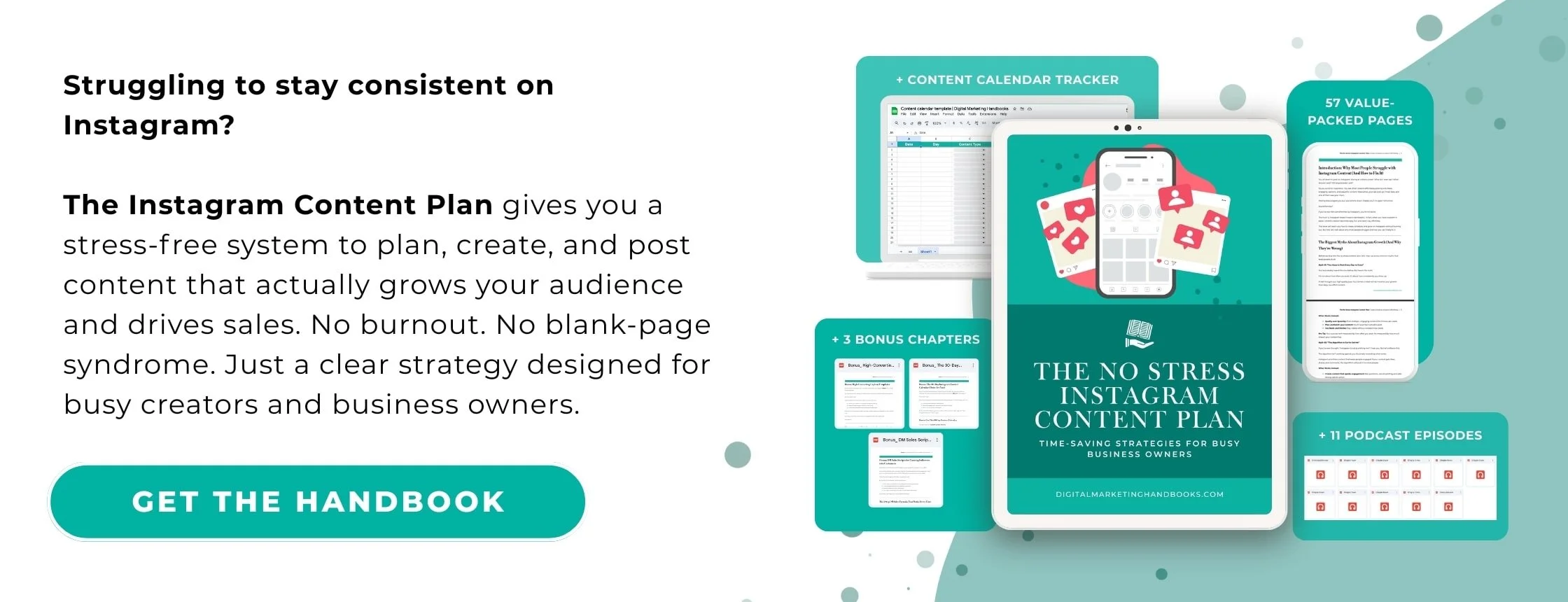The Ultimate Guide to Building a Sustainable Instagram Content Calendar
Instagram success doesn’t happen by chance—it takes strategy, consistency, and creativity. But let’s be honest, keeping up with content creation can feel overwhelming, especially when you're juggling other aspects of your business or brand.
That’s where a sustainable Instagram content calendar comes in. A well-planned calendar helps you stay consistent without burning out, engage your audience without last-minute stress, and keep your content fresh and relevant all year long.
Ready to create a content calendar that works for you? Let’s dive in.
Why You Need an Instagram Content Calendar
Many creators and business owners struggle with inconsistency because they’re stuck in a cycle of posting spontaneously. While spontaneity has its place, relying on it alone often leads to:
Missed posting opportunities
Inconsistent engagement
Creative burnout
Stress from scrambling for ideas
A content calendar solves all of this by providing a structured approach that helps you:
Stay organized and consistent
Plan ahead for key events and trends
Balance different content types
Repurpose and maximize content efficiency
The best part? A content calendar doesn’t stifle creativity—it frees up mental space so you can create with intention.
Step 1: Define Your Instagram Goals
Before you start filling in your calendar, take a step back and define your main Instagram objectives. Ask yourself:
Are you looking to increase brand awareness?
Do you want to boost engagement and build community?
Are you driving website traffic or sales?
Is your focus on growing your audience?
Your content should always align with your goals. For example, if your goal is boosting engagement, your calendar should include interactive posts like polls, questions, and Reels that encourage comments and shares.
Step 2: Identify Your Content Pillars
A well-balanced Instagram feed isn’t just about posting for the sake of it—it’s about creating content that resonates with your audience. The key to achieving this? Content pillars.
Content pillars are the main themes or categories that define your brand’s messaging. They ensure your content remains focused and valuable.
How to Choose Your Content Pillars
Think about the topics that matter most to your audience and brand. A good rule of thumb is to select three to five pillars.
For example, a fitness brand might have:
Education – Workout tips, nutrition advice, myth-busting posts
Motivation – Success stories, client transformations, inspiring quotes
Behind-the-Scenes – A day in the life, team introductions, product development
User-Generated Content (UGC) – Customer testimonials, reshared posts
Promotions – Product launches, limited-time discounts, special offers
Once you define your pillars, your content calendar will feel organized and intentional, rather than random.
Step 3: Determine Your Posting Frequency
One of the biggest mistakes brands make is starting too strong and then burning out. The key to sustainability is choosing a posting schedule you can maintain long-term.
How Often Should You Post?
There’s no one-size-fits-all answer, but here are some general recommendations:
Reels: 3-5 times per week (great for reach and discovery)
Feed Posts: 3-4 times per week (carousels and single-image posts)
Stories: Daily (Stories are crucial for engagement)
Instagram Live: 1-2 times per month (builds real-time connection)
Rather than focusing on quantity, focus on quality and consistency. It’s better to post 3 times per week consistently than 7 times one week and nothing the next.
Step 4: Plan Content in Advance
Now that you have your goals, content pillars, and posting frequency in place, it’s time to start filling in your calendar.
How to Plan Your Content Efficiently
Use a Content Calendar Tool
Google Sheets, Notion, Trello, or a scheduling tool like Later or Planoly can help you stay organized.
Batch Create Content
Set aside one or two days per month to create and schedule content in advance.
Incorporate Seasonal & Trend-Based Content
Plan for holidays, product launches, and trending topics in your industry.
Leave Room for Real-Time Content
While planning is essential, don’t forget to leave space for spontaneous posts, trends, and live interactions.
Step 5: Automate and Schedule Your Posts
Once your content is planned, take advantage of scheduling tools to automate your posting.
Best Instagram Scheduling Tools
Meta Business Suite – Free and built into Instagram
Later – Great for visual planning and hashtag research
Planoly – User-friendly and designed for Instagram
Hootsuite – Best for managing multiple social platforms
Scheduling posts in advance saves time, ensures consistency, and reduces stress, so you’re not scrambling to post last-minute.
Step 6: Track Performance and Adjust
Even the best content calendar needs adjustments based on what’s working. Regularly review Instagram Insights to see:
Which posts get the most engagement
What types of content resonate with your audience
When your followers are most active
How to Use Insights to Improve Your Content Calendar
If Reels are performing better than static posts, adjust your calendar to include more short-form videos.
If engagement drops on certain days, experiment with different posting times.
If user-generated content gets high engagement, feature more community posts.
A flexible content calendar ensures continuous growth and engagement.
Final Thoughts: Create a Sustainable Instagram Content Calendar Today
A well-structured content calendar is a game-changer for Instagram success. By planning ahead, balancing consistency with creativity, and using automation tools, you’ll create a stress-free, high-impact strategy that drives results.
Start small. Choose your content pillars, define your posting schedule, and plan just one month in advance. Over time, this system will save you time, reduce stress, and keep your Instagram strategy on track year-round.

